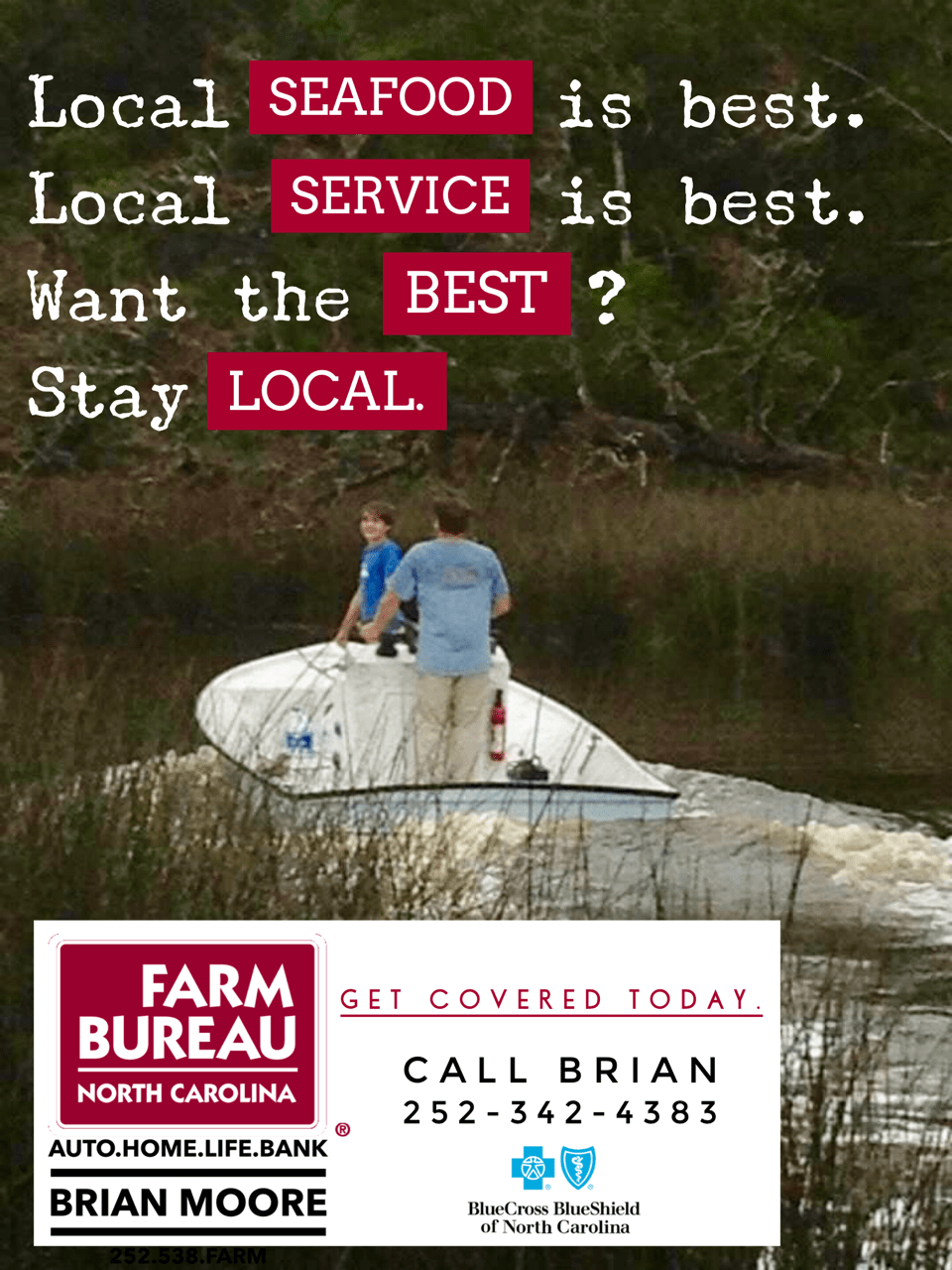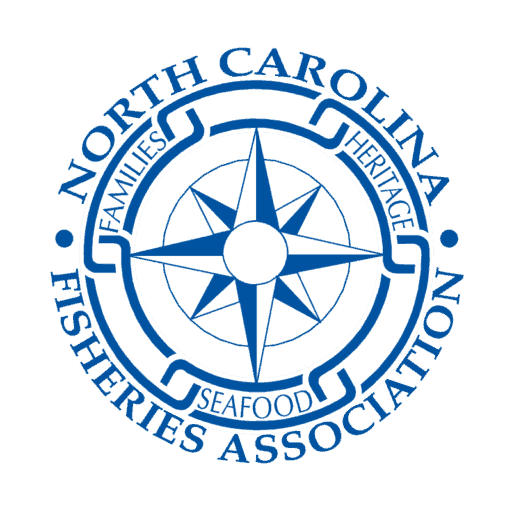In February of 2022, the North Carolina Fisheries Commission (MFC) reviewed draft Amendment 2 to the Striped Bass Fishery Management Plan (FMP) and approved the draft Amendment to be sent out for public comment and review by the standing Advisory Committees. Prior to approving the draft, a majority of the MFC voted to remove any option, that would allow the possibility of allowing the use of gill nets, above the ferry lines in the Tar-Pamlico and Neuse Rivers, from draft Amendment 2. This vote, in my opinion, was nothing more than an effort, by the MFC, to censor the public and Advisory Committees on an issue they do not wish to discuss. Which raises a very important question.
Who’s advising who?
Both the public and Standing Advisory Committee were meant to play a very important role in our fisheries management process by advising the MFC, prior to their deliberations on management options. The current MFC chose to deliberate whether gill nets should be allowed, prior to the options being reviewed by either the public or AC’s , and through a majority vote decided to advise the public and Advisory Committees, not to even consider allowing the use of gill nets above the ferry lines.
If that’s not a perfect example of the tail wagging the dog, I don’t know what is!
This whole debate over gill nets above the Pamlico and Neuse River ferry lines began in February of 2019 when the MFC passed supplement A to the Striped Bass FMP, which eliminated the harvest of Striped Bass in the Central Management Area. After the approval of Supplement A, several Commissioners requested that the DMF Director at that time, Steve Murphey, issue a proclamation banning the use of gill nets above the ferry lines. Director Murphey, through the attached letter declined their request and provided sound justification for doing so.
In this letter, Director Murphey stated that “after careful consideration I have concluded that such a measure is not supported by the scientific data that support gill nets as the primary or even the most significant source of discard mortality” and provided an in-depth explanation of how he came to this conclusion.
Despite the lack of scientific justification for banning the use of gill nets above the ferry lines, or anywhere else for that matter, the MFC, at an emergency meeting in March of 2019, voted to force Director Murphey to issue the proclamation and banned the use of gill nets above the Neuse and Pamlico River ferries.
Immediately after the March MFC meeting DEQ Secretary Michael Reagan, issued a press release condemning the actions of the MFC. In the press release, Secretary Reagan expressed his concern with the MFC for calling an emergency meeting for a non-emergency and said “the commission used bad judgement in directing the Division of Marine Fisheries Director to take actions that contradict science and the recommendations of the division scientist. I certainly hope this is not a precedent we will see again from this Commission.”
He went on to state that “The statute empowering the Marine Fisheries Commission to direct issuance of gill net bans in certain areas does not authorize the Secretary or the Department discretion to overturn such a directive” implying that if he had the authority, he would have overturned the net ban.
Unfortunately, “this Commission” has, once again, shown “bad judgement” by attempting to uphold their net ban and censor the input from both the public and their own Advisory Committees. Their actions have shown a total disregard for science and contempt for the management process and the seafood industry. In the absence of a sound scientific argument, many anglers who support the net ban, have found other, more creative, arguments to justify the continuation, or even the expansion, of the Neuse and Pamlico River net bans.
The most popular argument seems to be that the Neuse and Tar-Pamlico Striped Bass Stocks are made up mostly of hatchery reared fish, stocked into these river systems by the WRC. Fish, they claim, were bought and paid for solely by anglers. While its true that millions of stripers have been stocked into these systems by the WRC and that recent data suggests without stocking of hatchery reared fish the Neuse and Tar-Pamlico stocks will likely decline, their claim of sole ownership falls short, in my opinion.
The stocking of “sport fish”, like striped bass, in NC and many other states is primarily funded by the US Fish and Wildlife Service through the Sport Fish Restoration and Boating Trust Fund. These funds are derived from federal excise taxes and import duties collected on various items such as, fishing tackle, electronics, (fish finders, trolling motors) pleasure boats and yachts, and a portion of the federal gas taxes attributed to motorboat fuel and small outdoor engines (lawnmowers, snowblowers, chainsaws etc.).
While I’m still not certain how the government determines what percentage of the gas sold in the US goes into motorboats and small outdoor engines. I am sure that this portion of the Federal gas tax represents the majority of the revenue generated for the sport fishing Restoration and Boating Trust Fund annually.
In recent years the portion of the 18.4 cents per gallon federal gas tax all Americans pay, that is attributed to motorboat and small engine use, has accounted for approximately 70% of these funds averaging $600,000,000 to $700,000,000 per year.
This said, it’s safe to assume that a significant portion of the funds distributed, to NC and other states, for fish stocking programs is generated by non-anglers such as commercial fishermen and seafood consumers.
Afterall it’s hard to imagine a scenario where lawn mowers or snowblowers would be necessary while hook and line fishing for Striped Bass. It’s also absurd to assume that all gas used in a “motorboat” would be for the sole purpose of recreational fishing. What about, pleasure boating, water skiing, tubing, diving, sunbathing, marine construction, or even gill netting?
The fact is, many projects such as fish stocking, that benefit recreational fishermen are funded by anglers and non-anglers alike.
In my mind this raises a couple of very important questions.
Should a state agency, or anyone else, be allowed to restrict commercial, consumer, or recreational access to a resource we as taxpayers bought and paid for?
Or
Should they be allowed to choke out commercial and consumer access to other fisheries, through a gill net ban, while trying to establish sole ownership of a resource we all contributed to?
The answer to both is NO!
In the Striped Bass FMP decision document, the Division states that “sustainability of Tar-Pamlico and Neuse River stocks is unlikely at any level of fishing mortality”, this includes release mortality from the recreational hook and line fishery. The truth is, without addressing the issues like water flow, pollution and man-made structures preventing access to critical spawning grounds, the Striped Bass stocks in these areas cannot maintain or increase abundance without stocking of hatchery reared fish, with or without a gillnet fishery!
This is true in many fisheries across NC and the rest of the Country.
Think about it.
Why does NC and other states stock trout or other species into mountain streams and lakes across the country where gill nets have never been used?
Why has Texas, which banned the use of gillnets in the 1980’s, released over 800 million Red Drum into their waters, if gillnets were truly the issue? This debate is, and always has been, about allocation or ownership of our marine resources.
Why else would a, supposedly objective, Commission choose to reward catch and release anglers with sole ownership of a bought and paid for stock while eliminating all access to anglers, seafood harvesters, and consumers who view this resource as a source of food?
The MFC and WRC could manage the CSMA Striped Bass fishery as a put and take fishery, for the benefit of all NC citizens who contribute to stocking if they choose. In the very least they could allow gillnets to be used as they were, prior to March of 2019, with restrictions that were proven to reduce the mortality of Striped Bass when the commercial harvest season was closed.
Maybe everyone who contributed to the stocking of these fish, commercial fishermen, anglers, and consumers, should let the Advisory Committees and MFC know gillnets are not the problem and their use should be allowed above the ferry lines in the Neuse and Pamlico Rivers, as it was prior to 2019!
Opportunities to offer public comment are listed below.
Will you speak up?
Glenn Skinner
NCFA- Executive Director
This Press Release is dated 2019
Release: IMMEDIATE
Contact: Megan S. Thorpe
Date: March 14, 2019
Phone: 919-618-0968
Secretary Regan’s Statement on Marine Fisheries
Commission’s Non-Emergency
RALEIGH — N.C. Department of Environmental Quality Secretary Michael S. Regan issued the following statement on the emergency meeting called by the Marine Fisheries Commission this week:
I am disappointed by the Marine Fisheries Commission calling an emergency meeting with only 48 hours notice for a non-emergency. The Commission used bad judgment in directing the Division of Marine Fisheries Director to take actions that contradict science and the recommendations of the division’s scientists. I certainly hope this is not a precedent we will see again from this Commission.
The statute empowering the Marine Fisheries Commission to direct issuance of gill net bans in certain areas does not authorize the Secretary or the Department discretion to overturn such a directive.
nr-26-2019
CLICK THE LINK BELOW TO READ DIRECTOR MURPHEY’S LETTER TO MARINE FISHERIES COMMISSION DATED 2019
REMINDER: Division of Marine Fisheries opens public comment, schedules listening session and advisory committee meetings
on Estuarine Striped Bass Plan Amendment
LEGISLATIVE UPDATE:
Last week we provided a listing of primary election candidates who will be on the ballot in May for state and congressional elections. Only those races for coastal districts were listed.
Here are the links for Congressional districts and North Carolina Senate and House districts that were finalized recently. If you can’t figure out what district you are in with the new maps, drop us a note and we’ll let you know.
CONGRESSIONAL MAP:
https://www.ncleg.gov/Files/GIS/Plans_Main/Congress_2022_Court/2022%20Interim%20Congressional%20-%2011%20x%2017%20Map.pdf
NC SENATE MAP:
https://www.ncleg.gov/Files/GIS/Plans_Main/Senate_2022/SL%202022-2%20Senate%20-%2011%20x%2017%20Map.pdf
NC HOUSE MAP:
https://www.ncleg.gov/Files/GIS/Plans_Main/House_2022/SL%202022-4%20House%20-%2011%20x%2017%20Map.pdf
GENERAL ASSEMBLY LAST WEEK:
The Senate met for one day last Wednesday with the House meeting on Thursday. The Senate attempted to override one of Governor Cooper’s vetos but failed. In addition they passed a ‘technical corrections” bill. Those are the kinds of bills one needs to watch very closely because they can include provisions that are not just “technical” but can make substantial changes. They are also difficult to assess because leadership holds them close to the vest. When I arrived in Raleigh on Wednesday none of the Senators I spoke to had seen the bill yet.
As it turns out, the only fisheries related provision was to extend the deadline for a fisheries study by the UNC Collaboratory from June 2023 to 2025. That wasn’t a surprise to us as Jeff Warren, Executive Director for the Collaboratory informed me of their request a few weeks ago to extend the date for the final report to be made to the Environmental Review Commission.
Hopefully, the General Assembly will be done, except for maybe some committee meetings, until after the primary election in May.
God bless,
Jerry

